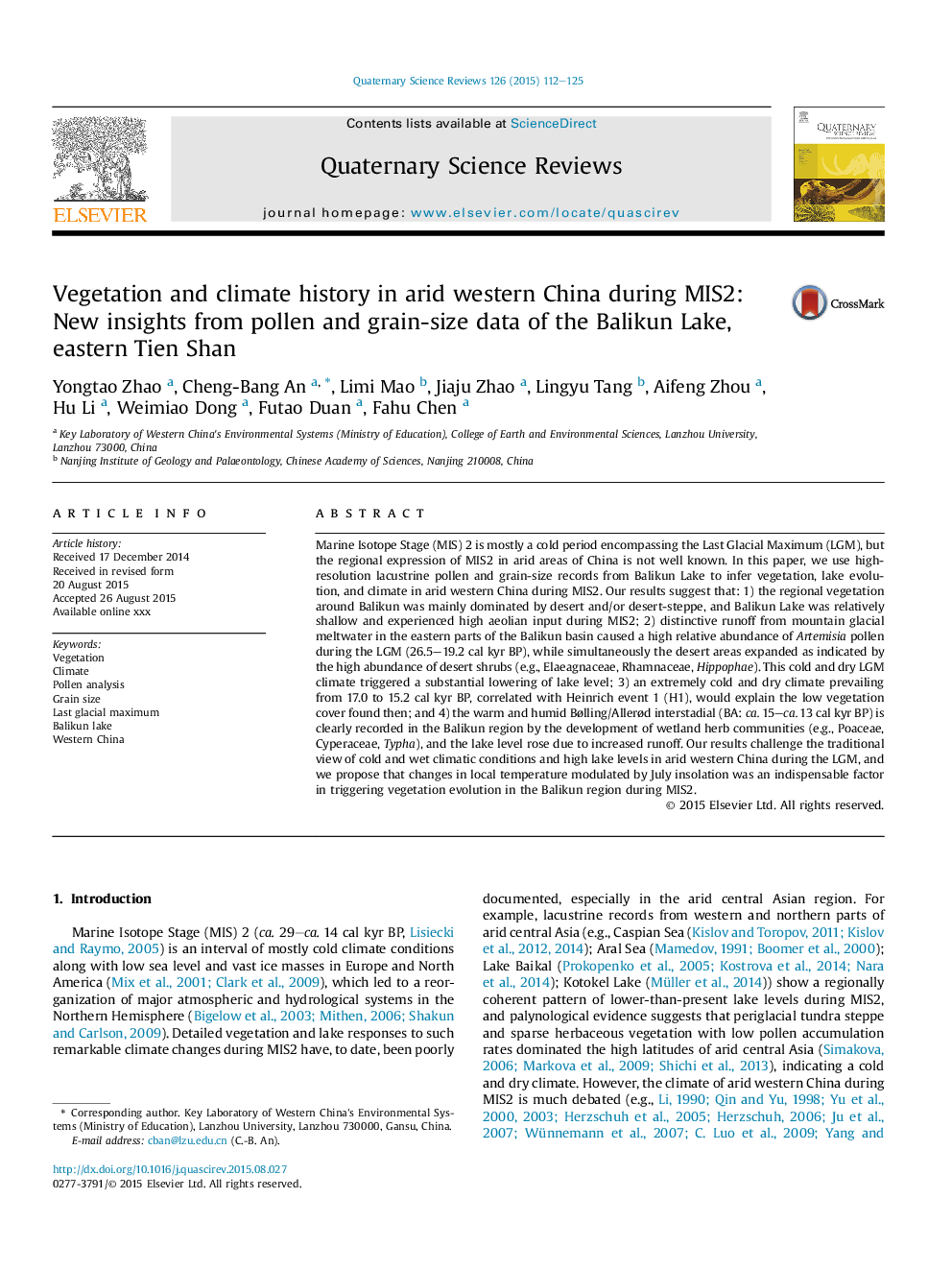| کد مقاله | کد نشریه | سال انتشار | مقاله انگلیسی | نسخه تمام متن |
|---|---|---|---|---|
| 6445823 | 1640808 | 2015 | 14 صفحه PDF | دانلود رایگان |
عنوان انگلیسی مقاله ISI
Vegetation and climate history in arid western China during MIS2: New insights from pollen and grain-size data of the Balikun Lake, eastern Tien Shan
دانلود مقاله + سفارش ترجمه
دانلود مقاله ISI انگلیسی
رایگان برای ایرانیان
کلمات کلیدی
موضوعات مرتبط
مهندسی و علوم پایه
علوم زمین و سیارات
زمین شناسی
پیش نمایش صفحه اول مقاله

چکیده انگلیسی
Marine Isotope Stage (MIS) 2 is mostly a cold period encompassing the Last Glacial Maximum (LGM), but the regional expression of MIS2 in arid areas of China is not well known. In this paper, we use high-resolution lacustrine pollen and grain-size records from Balikun Lake to infer vegetation, lake evolution, and climate in arid western China during MIS2. Our results suggest that: 1) the regional vegetation around Balikun was mainly dominated by desert and/or desert-steppe, and Balikun Lake was relatively shallow and experienced high aeolian input during MIS2; 2) distinctive runoff from mountain glacial meltwater in the eastern parts of the Balikun basin caused a high relative abundance of Artemisia pollen during the LGM (26.5-19.2 cal kyr BP), while simultaneously the desert areas expanded as indicated by the high abundance of desert shrubs (e.g., Elaeagnaceae, Rhamnaceae, Hippophae). This cold and dry LGM climate triggered a substantial lowering of lake level; 3) an extremely cold and dry climate prevailing from 17.0 to 15.2 cal kyr BP, correlated with Heinrich event 1 (H1), would explain the low vegetation cover found then; and 4) the warm and humid Bølling/Allerød interstadial (BA: ca. 15-ca. 13 cal kyr BP) is clearly recorded in the Balikun region by the development of wetland herb communities (e.g., Poaceae, Cyperaceae, Typha), and the lake level rose due to increased runoff. Our results challenge the traditional view of cold and wet climatic conditions and high lake levels in arid western China during the LGM, and we propose that changes in local temperature modulated by July insolation was an indispensable factor in triggering vegetation evolution in the Balikun region during MIS2.
ناشر
Database: Elsevier - ScienceDirect (ساینس دایرکت)
Journal: Quaternary Science Reviews - Volume 126, 15 October 2015, Pages 112-125
Journal: Quaternary Science Reviews - Volume 126, 15 October 2015, Pages 112-125
نویسندگان
Yongtao Zhao, Cheng-Bang An, Limi Mao, Jiaju Zhao, Lingyu Tang, Aifeng Zhou, Hu Li, Weimiao Dong, Futao Duan, Fahu Chen,